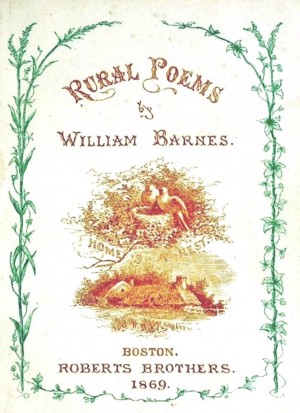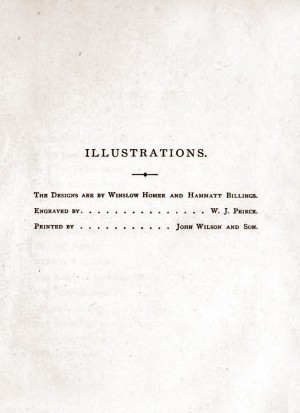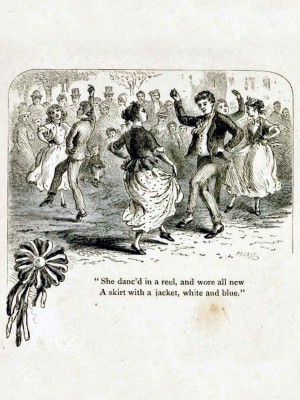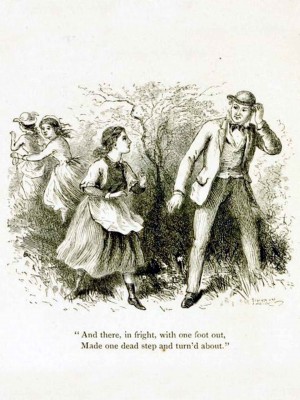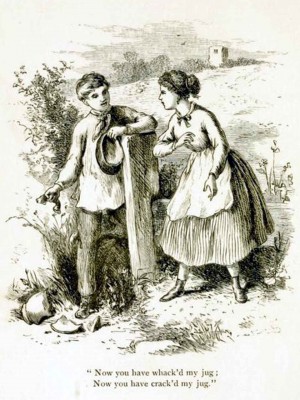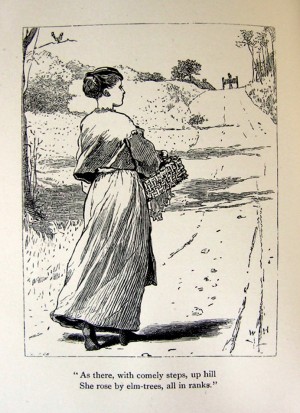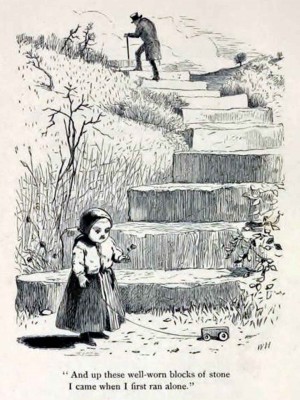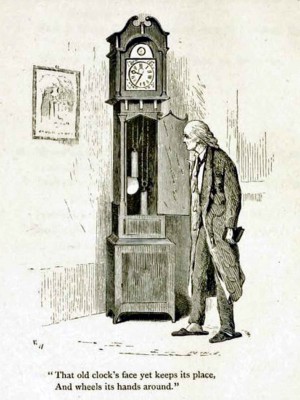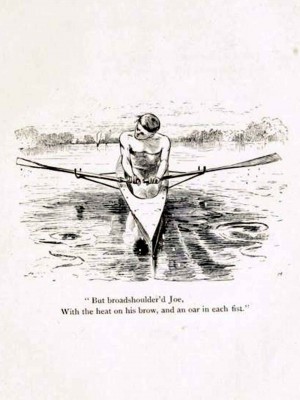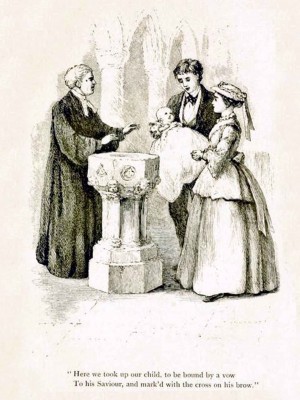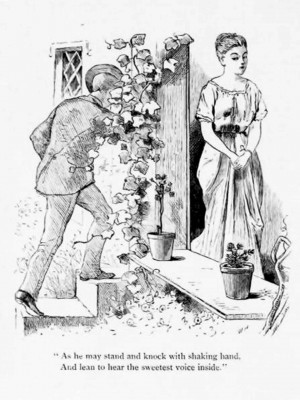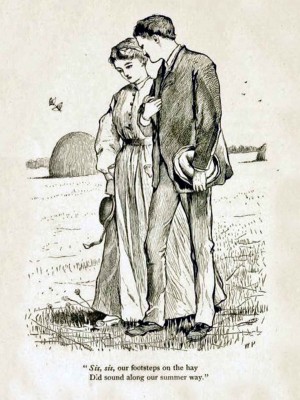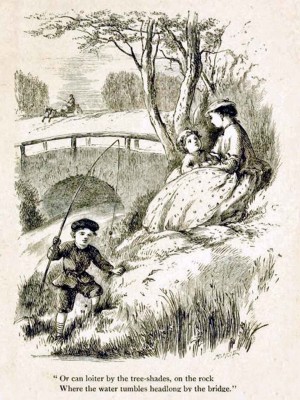William Barnes and Winslow Homer
Jim Potts
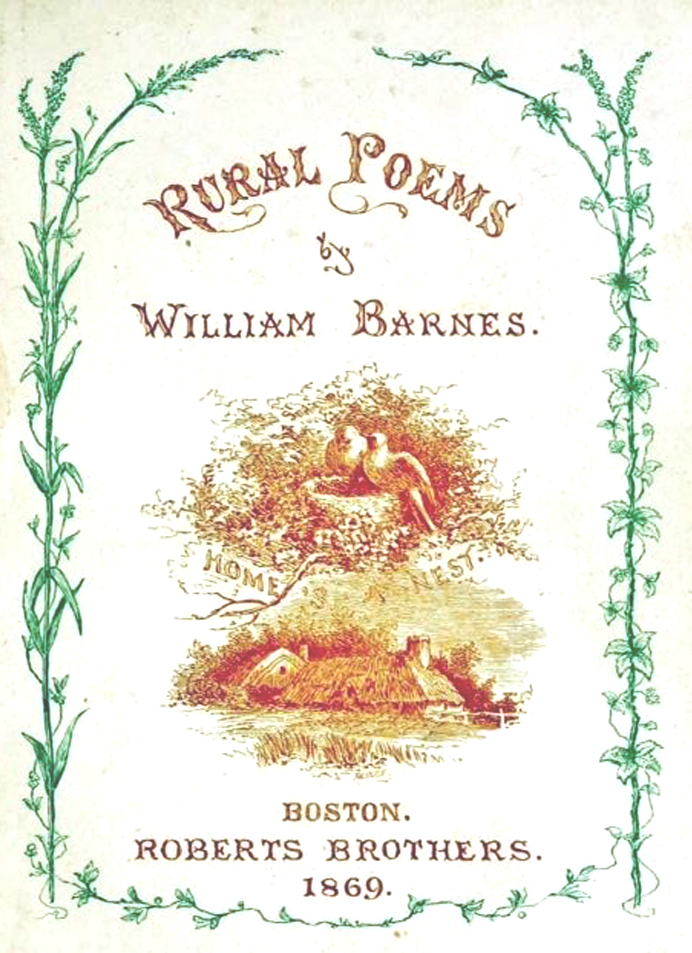 William Barnes' poems, in his first two publications, Poetical Pieces (1820) and Orra: A Lapland Tale, 1822, were written in standard English. They were inspired by his love for Julia Miles, his wife-to-be.
William Barnes' poems, in his first two publications, Poetical Pieces (1820) and Orra: A Lapland Tale, 1822, were written in standard English. They were inspired by his love for Julia Miles, his wife-to-be.
Julia, and Barnes' mother, Grace Barnes, who died when he was fifteen, both played a vital part in the development of his artistic sensitivity. Giles Dugdale writes that his mother shared with him “her ardent love of poetry, of Nature and of the Arts….As an old man he still clearly recalled ¦the tone of her voice as she recited poetry to him and described paintings and other works of art she had seen in the neighbouring great houses. Alan Chedzoy observes that William's mother was - barely literate- but her granddaughter recorded that she had inherent love of art and poetry and that she “recited passages of poems which she had learned."
The following William Barnes poems (ie the twelve with accompanying graphic illustrations) were among the eighty-six poems included in Rural Poems, Roberts Brothers, Boston, 1869:
Not Far to Go - Illustrated by Winslow Homer
White and Blue -Illustrated by Hammatt Billings
Sheep in the Shade -Illustrated by Hammatt Billings
The Prize Winners -Illustrated by Winslow Homer
Righting Up the Church -Illustrated by Hammatt Billings
The Broken Jug -Illustrated by Hammatt Billings
The Stonen Steps -Illustrated by Winslow Homer
The Old Clock -Illustrated by Winslow Homer
At the Door - Illustrated by Winslow Homer
Soft Sounds -Illustrated by Winslow Homer
The Surprise -Â Illustrated by Hammatt Billings
Come and Meet Me, Husband to Wife -Illustrated by Hammatt Billings
Many of these poems in 'Common' or 'National' English also exist as poems written in the Dorset dialect.
The poems in the Roberts Brothers Boston edition were illustrated by Winslow Homer (6 illustrations), Hammatt Billings (7 illustrations, being 6 poems and the frontispiece design), all engraved by W. J. Peirce.
According to James F. O. Gorman, in his book Accomplished in All Departments of Art - Hammatt Billings of Boston, 1818-1874, University of Massachusetts Press, Amherst, 1998, Billings rarely signed his illustrations.
Winslow Homer used his initials, W.H., on his designs. Winslow Homer was born on February 24, 1836, and died on September 29, 1910. He began his career as a magazine illustrator and went on to become recognised as one of America’s greatest nineteenth-century painters. He spent two years in England (1881-1882).
Hammatt Billings was born in 1818 and died on 14 November 1874. He was once a well-known name in Boston. He produced the original illustrations for Uncle Tom's Cabin. As an illustrator Billings placed his pencil in the service of the great issues of his time, especially the three most important moral issues: war, intemperance, and slavery, but later he fell out fashion, as James F. O. Gorman writes in his book.
"Billings was a premier illustrator for many Boston publishers, major and minor, during that flowering of New England letters that has come to be called the American Renaissance. He drew illustrations for well over 250 titles during his career. They appeared largely as wood engravings, more rarely on steel, more rarely still as lithographs. He covered all the areas of current interest, as well as the literature of writers such as Oliver Wendell Homes, John Greenleaf Whittier, Nathaniel Hawthorne, Harriet Beecher Stowe, Louisa May Alcott, and English authors from Walter Scott to Oliver Goldsmith and Charles Dickens."
Billings visited England in 1865, looking for some commissions or other artistic opportunities.
"Homer's career as an illustrator lasted nearly twenty years. He contributed to magazines such as Ballou's Pictorial and Harper's Weekly, at a time when the market for illustrations was growing rapidly, and when fads and fashions were changing quickly. His early works, mostly commercial engravings of urban and country social scenes, are characterized by clean outlines, simplified forms, dramatic contrast of light and dark, and lively figure groupings - qualities that remained important throughout his career. His quick success was mostly due to this strong understanding of graphic design and also to the adaptability of his designs to wood engraving."
"Homer spent two years (1881 - 1882) in the English coastal village of Cullercoats, Northumberland. Many of the paintings at Cullercoats took as their subjects working men and women and their daily heroism, imbued with a solidity and sobriety which was new to Homer's art, presaging the direction of his future work. He wrote, "The women are the working bees. Stout hardy creatures." His palette became constrained and sober; his paintings larger, more ambitious, and more deliberately conceived and executed. His subjects more universal and less nationalistic, more heroic by virtue of his unsentimental rendering. Although he moved away from the spontaneity and bright innocence of the American paintings of the 1860's and 1870's, Homer found a new style and vision which carried his talent into new realms".
Professor David Tatham, author of Winslow Homer and the Illustrated Book, Syracuse University Press, 1992, kindly responded to my emailed enquiry, as follows: "The Homer illustrations are interesting and I believe represent Homer's real affinity with the poem's texts". He lists the Winslow Homer illustrations as the following:
a. Not Far To Go
b. The Stonen Steps
c. The Old Clock
d. Broadshoulder'd Joe (i.e. The Prize Winners)
e. At The Door
f. Our Footsteps On The Hay (i.e. Soft Sounds)
(Compare Homer's Not Far to Go illustration with his painting The Dinner Horn)
James F. O. Gorman writes, in Accomplished in All Departments of Art - Hammatt Billings of Boston, 1818-1874:
"Billings's heyday as a book illustrator lasted through the 1850s and with the aftermath of the Civil War. His tireless production suggests that he was one of the most sought-after illustrators of his generation in the Boston area. Yet by the time of his death in 1874, he had been largely by-passed as a graphic artist of consequence. The handwriting appeared on the wall perhaps as early as 1869, when he was paid less for more work on the same project. Roberts Brothers' publication of William Barnes's Rural Poems, than was his erstwhile prot, Winslow Homer. While Homer received $120 for six designs, Billings earned just $95 for seven, plus a cover device. Changing taste is clear from the illustrations as well, in the contrast between the heavy, plodding figures of Billings versus the lithe, light and linear forms of Homer".
What did William Barnes think of the Boston edition and its illustrations?
I have not yet been able to check the Barnes archive to ascertain if he, as a talented engraver himself, commented on the merits of Peirce, the American engraver, or on the work of the two American illustration designers, Winslow Homer and Hammatt Billings. Did Barnes approve of their illustrations? Could he perhaps have done better himself?
Illustrations for the 1869 Rural Poems by William Barnes

